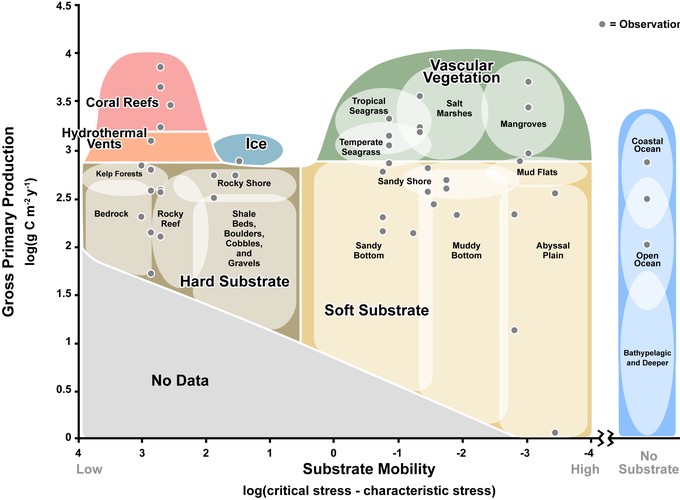 Image credit: Cramer & Katz 2020
Image credit: Cramer & Katz 2020
 Image credit: Cramer & Katz 2020
Image credit: Cramer & Katz 2020
The emergence of pattern in the natural world can carry important messages about underlying processes. For example, collections of broadly similar terrestrial ecosystems have historically been categorized as biomes – groupings of systems that sort along energetic and structural process axes. In marine systems however, a similar classification of biomes has not emerged. The aim here is to develop an effective classification scheme for marine biomes and communities. Candidate predictor variables that could explain pattern and process in differentiating marine communities, such as light, nutrients, depth, etc., were collected from the existing literature with a systematic review. The candidate predictors were then evaluated in an inductive process, allowing community level observations to demonstrate patterns across marine biomes. Marine biomes and communities were identified a priori, and emergent patterns were evaluated quantitatively, via principal component ordination based on the vectors of explanatory predictors, and qualitatively via mapping. Gross primary production and substrate mobility not only effectively sort marine biomes, but also work on finer scales discriminating communities within biomes. As a result, these predictors were more effective in classifying marine communities than other scales, such as available light and nutrients. The richness of this classification is also demonstrated in revealing other patterns, such as the distribution of human impacts. The effectiveness of this mapping provides support for, but is not a test of, the hypothesis that primary production and substrate mobility are important underlying processes that interact to structure marine ecosystems.